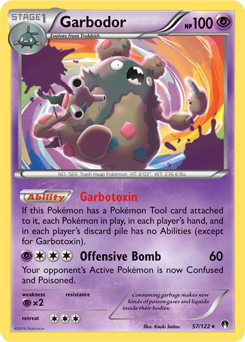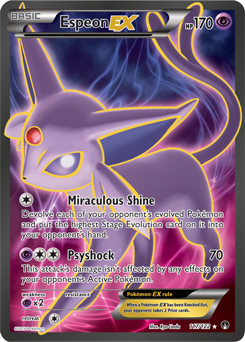Intriguing Internationals — Drampa-GX / Garbodor and a Look at the Top Cut

Hey there PokeBeach! It hasn’t been long since I last wrote for you all. Now that the London International has finished, there are a ton of things to look over for the Standard format and its upcoming tournaments. Zoroark-GX and Silvally-GX both had a huge showing, finishing in first and second on the day. Multiple players managed to prove the strength of Buzzwole-GX by playing the Ultra Beast alongside Lycanroc-GX to obtain two top eight finishes. Four Norwegian players were able to finish in the top 8, which is astounding for such a large tournament.
For this article, I’ll start by looking at what I opted to play on the day, and then move on to some of the trends that will most likely define the format for the next couple of months. Since Crimson Invasion was first legal on the day of Internationals, we will be starting 2018 with tournaments in this format before Ultra Prism brings as much Metal support as possible in February.
If It’s Still Good, I’ll Play It — Drampa-GX / Garbodor

I started off for Internationals by toying around with the Silvally-GX list I posted in my last article. My mind was set on playing some iteration of Silvally-GX / Metal the week before, but I couldn’t get the deck to consistently beat the main reason our secondary attackers are Metal typed — Gardevoir-GX! The matchup still felt like a 50-50 due to the power of Gallade. The deck definitely had potential to make it through the tournament, but I decided to shift back to what I’ve been playing for the past couple of tournaments: Drampa-GX / Garbodor.
This deck just doesn’t go away. The combination of Drampa-GX, a powerful Colorless attacker, plus the one-two punch of Ability lock and Item punishment in the form of Garbodor gives this archetype a chance versus any deck. Four copies of Po Town keep evolutions in check, while Espeon-GX provides a great stall tactic when needed with Confusion along with Divide GX as a way to KO Benched pre-evolutions or soften up bigger threats.
With the release of Crimson Invasion and Shining Legends, there weren’t any new cards that fit into Drampa-GX / Garbodor after trying out some of them. Shining Jirachi was an interesting option in place of Espeon-EX, but being able to devolve only a single Pokemon and its low HP meant that it still felt inferior to Espeon’s high 170 HP and Miraculous Shine. Lusamine was a thought to grab extra copies of Guzma or N in the late game. This seemed too slow compared to just playing the full four copies of these important Supporters, so it also didn’t make the cut.
Another potential idea was to go back to Rainbow Energy for techs like Celesteela-GX or even a return to Zygarde-EX or Buzzwole-GX to help with the Fighting-weak Zoroark-GX. Having a big attacker for these matchups is great, but the issue was both getting these Pokemon powered up in time, and the threat of Enhanced Hammer. The mirror match becomes slightly worse as well, as with less basic Energy there’s a greater chance your opponent can Righteous Edge early on to gain an advantage.
With these thoughts in mind, I landed on this list:
The Pokemon
Everything feels standard, with a few exceptions. Two Drampa-GX plus the 1-1 line of Espeon-GX are the attackers of choice for this metagame, giving the deck multiple options. These two Pokemon offer utility attacks to remove Energy or cause Confusion, or dish out massive damage — Berserk for 150 damage as long as there’s damage on your Bench, and Psychic which punishes your opponent for overextending their Energy attachments. Three Tapu Lele-GX provides enough Supporter search until Garbodor’s Garbotoxin is set up.
I opted to run a 3-2/2 line of Garbodor in this case. This felt strange at first, but makes sense — in nearly every game, one Garbotoxin Garbodor is discarded as the second copy isn’t needed for the matchup. The reason why there are two Garbotoxin Garbodor in the list is mainly for prizing issues. Without Ability lock, Secret Spring, Trade, and Wonder Tag all lead to the opponent having easier access to what they need to counter our plays. Getting Trubbish into play is still easy with three as it was with four — Brigette is a big help early on, and three copies is more than enough to draw into them in the first couple of turns. If you really need an extra copy throughout the game to get a final Trashalanche Garbodor into play, Rescue Stretcher gives you that access when you need it.

Finally, Espeon-EX is still crucial against all evolution decks to make use of Po Town and previously placed damage to take KOs on lower health pre-evolutions.
The Trainers and Energy
This deck is all out on consistency, with four copies of the main Supporters in the format. Brigette gives the option to set up our Bench straight away on turn one.
Acerola doesn’t usually find its way into Drampa-GX / Garbodor lists, but I like the inclusion. Being able to reuse a Drampa that had chip damage, pick up a stranded Garbodor in the Active, or even reuse a Tapu Lele-GX for Wonder Tag all helped out during testing. The effect also catches opponents by surprise, which is understandable considering that most Drampa-GX / Garbodor lists don’t deviate from the norm nowadays.
Four counts of both Tools still feels crucial to make sure you have Garbotoxin when needed, or access to the damage boost of Choice Band to hit important KOs. Four Po Town makes sure the Stadium spot is ours throughout the game, and chip damage constantly gets placed on evolutions to soften them up for KOs.
Since I didn’t opt for any Rainbow Energy, the Energy line is a simple eight Psychic and four Double Colorless. This provides enough Energy throughout the entire game.
How My Day Went
With over 750 Masters from all around the world, it wasn’t going to be an easy day. Drampa-GX / Garbodor is still a 50-50 deck, so my mindset was to get at least some points towards the top 22 invite for Worlds.
- Round 1: Espeon-GX / Garbodor WW (1-0-0)
- Round 2: Tapu Bulu-GX / Vikavolt LWL (1-1-0)
- Round 3: Volcanion WW (2-1-0)
- Round 4: Scizor-EX / Max Elixir WLT (2-1-1)
- Round 5: Gardevoir-GX LL (2-2-1)
- Round 6: Gardevoir-GX WW (3-2-1)
- Round 7: Gardevoir-GX WW (4-2-1)
- Round 8: Metal Box (Celesteela-GX / Kartana-GX / Registeel) WW (5-2-1)
- Round 9: Drampa-GX / Garbodor / Celesteela-GX WLT (5-2-2)
5-2-2, 136th Place
Unfortunately, my tournament run didn’t go as well as I hoped, but you can’t win them all! I hit some pretty bad hands at times and found it hard to keep up due to the deck’s 50-50 nature. My last round gave me a good shot at top 64 if the mirror went in my favor, but I couldn’t find a final Guzma for game in the last three turns of time and the match was a draw.
Overall, Drampa-GX / Garbodor is still a strong deck and I’d gladly play it all over again. Sometimes riskier plays like newer archetypes or the most popular archetypes make it all the way through these big events, and this International is no exception. Let’s have a look at what managed to come out on top in the European cut.
This concludes the public portion of this article.
If you'd like to continue reading, consider purchasing a PokeBeach premium membership! If you're not completely satisfied with your membership, you can request a full refund within 30 days.
Each week we post high-quality content from some of the game's top players. Our article program isn't a corporate operation, advertising front, or for-profit business. We set our prices so that we can pay the game's top players to write the best content for our subscribers. Each article topic is carefully selected, goes through multiple drafts, and is touched up by our editors. We take great pride in our program!

